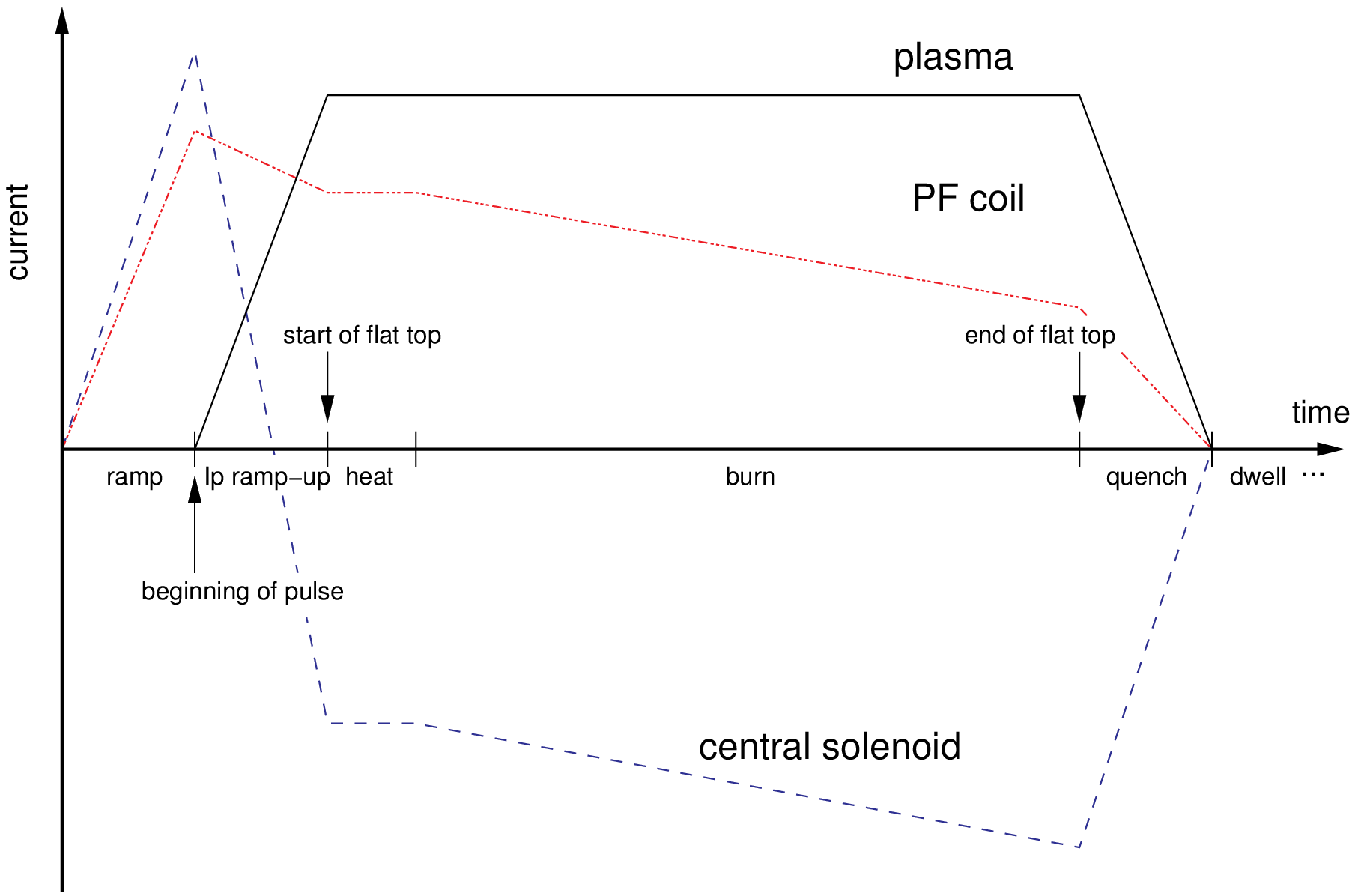PF Coil Model
The poloidal field (PF) coils are used initially to cancel the vertical field produced at the centre of the plasma by the central solenoid during start-up, and then to maintain the plasma position and shape during the flat-top period.
Positioning
The positions and sizes of te PF coils are partly input, and partly calculated after consideration of the required currents and allowable current density.
The PF coil locations are controlled using a set of switched stored in array ipfloc (see
Figure 1), and are calculated in routine PFCOIL. The coils are (usually) organised into groups
containing two PF coils placed symmetrically above and below the midplane, and each group j has
an element ipfloc(j) assigned to it. Input parameter ngrp should be set to the number of groups,
and ncls(j) should be assigned the number of coils in each group - which should be 2 in each case.
In the following, all variables are defined in the variable descriptor file vardes.html. The
values for rpf1, rpf2, zref(j) and routr should be adjusted by the user to locate the PF
coils accurately.
The three possible values of ipfloc(j) correspond to the following PF coil positions: (Redo taking
into account snull and other recent changes e.g. rclsnorm)
ipfloc(j) = 1: PF coils are placed above the central solenoid (one group only);
R = rohc + rpf1
Z = \pm(hmax * ohhghf + 0.1 + 0.5 * (hmax * (1 - ohhghf) + tfcth + 0.1))
ipfloc(j) = 2: PF coils are placed above the TF coils (one group only);
R = rmajor + rpf2
Z = \pm(hmax * tfcth + 0.86)
ipfloc(j) = 3: PF coils are placed radially outside the TF coils (any number of groups);
R = rtot + tfthko/2 + routr
Z = \pm(rminor * zref(j)
The void fraction (for coolant) in each coil i's winding pack is given by vf(i).
Coil currents
The peak current per turn, cptdin(i), and the winding pack peak current density rjconpf(i) in
each PF coil i are inputs. The PF coil currents vary as a function of time during the tokamak
operation as indicated in Figure 2. They contribute part of the flux swing necessary to maintain the plasma current.
Materials
The PF coils can be either resistive or superconducting. This is determined from the value of
ipfres. If ipfres = 0, the PF coils and the central solenoid are assumed to be superconducting.
If ipfres = 1, they are assumed to be resistive, with their resistivity given by the value of variable pfclres.
If ipfres = 0, switch isumatpf specifies which superconducting material is to be used for the
PF coils. The values of isumatpf are used in the same way as switch isumattf is for the TF coils.
The fraction of copper present in the superconducting filaments if given by the value of
variable fcupfsu.
If the PF coils are superconducting, a steel case is assumed to surround the current-carrying
winding pack to take the hoop stress. Its cross-sectional area is determined by the J \times
B hoop force on the coil divided by the allowable hoop stress, given by input parameter sigpfcalw.
The input parameters sigpfcf provides a scale factor (default is 0.666) to adjust the hoop force
if required, to indicate what proportion of the force is supported by the case.

